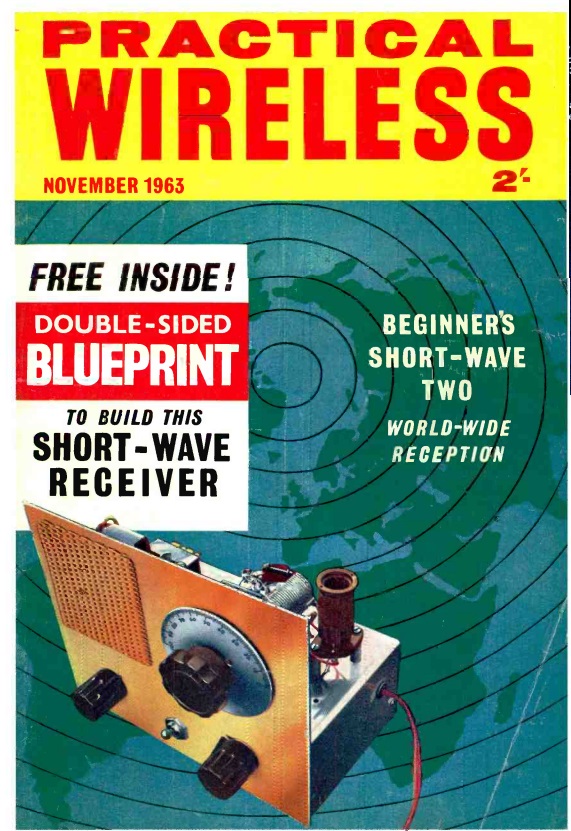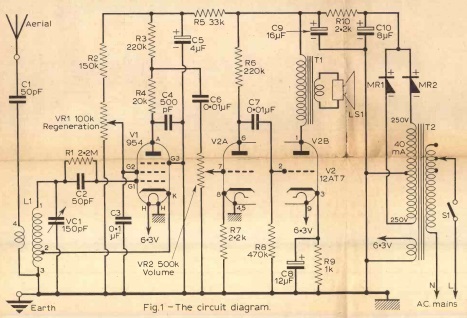 Sixty years ago this month, the November 1963 issue of the British journal Practical Wireless carried complete plans for constructing this handsome two-tube shortwave receiver. A transformer and solid state rectifier allowed it to be run from the AC mains. An acorn tube served as detector, with a dual triode supplying two stages of audio amplification for loudspeaker volume.
Sixty years ago this month, the November 1963 issue of the British journal Practical Wireless carried complete plans for constructing this handsome two-tube shortwave receiver. A transformer and solid state rectifier allowed it to be run from the AC mains. An acorn tube served as detector, with a dual triode supplying two stages of audio amplification for loudspeaker volume.
The set could tune 1.2 MHz to 100 MHz (or even lower, although each band would be quite narrow). For general use, the magazine suggested a coil covering 7-22 MHz, and perhaps a second one for 2-5 MHz. Coils could be wound on old tube bases, and complete coil data was included.
Since the set was designed for beginners, the blueprint also included a wealth of data useful new SWL’s, such as a list of stations, frequency allocations, and the Q-code.

